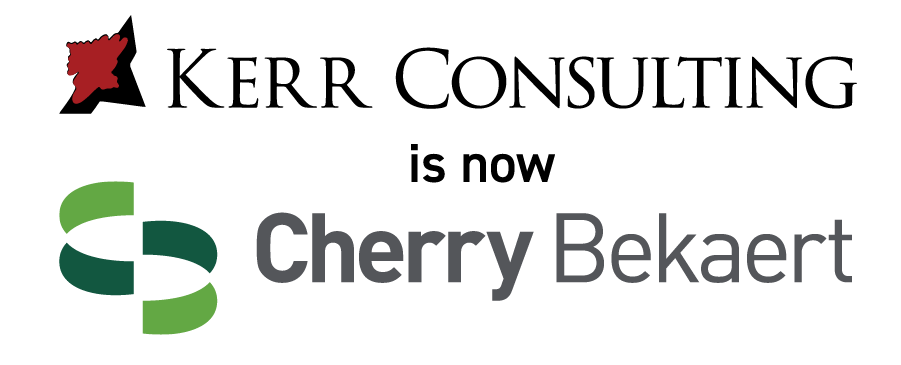Implementing Sage Construction Management in Your Business: A Step-by-Step Guide

Are you looking to streamline your construction processes and improve efficiency in your business? Look no further than Sage Construction Management. This powerful Sage construction software solution is designed specifically for the construction industry and can help you manage all aspects of your projects, from estimating and bidding to project management and accounting.
When looking to enhance your construction processes and boost efficiency in your business, implementing Sage Construction Management Software can be a game-changer. Tailored specifically for the construction industry, this robust software solution covers all project aspects, from initial estimating and bidding to seamless project management and precise accounting. By incorporating this software into your operations, you can streamline workflows, improve collaboration, and gain access to real-time data and insights, ultimately elevating your construction projects to new heights.
In this step-by-step guide, we’ll walk you through the process of implementing Sage Construction Management in your business and how it can benefit your construction operations.
Why Choose Sage Construction Management?
Sage Construction Management is a comprehensive software solution that is specifically designed for the construction industry. It offers a range of features and tools to help you manage all aspects of your construction projects, including estimating, project management, accounting, and more. With the guidance of a Sage Construction Manager, you can efficiently oversee every phase of your construction projects.
Streamline Your Processes
One of the main benefits of Sage Construction Management is its ability to streamline your processes. With all of your project information in one centralized location, you can easily track progress, manage budgets, and communicate with your team. This eliminates the need for multiple systems and manual data entry, saving you time and reducing the risk of errors.
Improve Collaboration and Communication
Sage Construction Management also offers powerful collaboration and communication tools. With real-time updates and access to project information from anywhere, your team can work together seamlessly and stay on top of project changes and updates. This improves communication and ensures everyone is on the same page, leading to more efficient and successful projects.
Access to Real-Time Data and Insights
With Sage Construction Management, you have access to real-time data and insights into your projects. This allows you to make informed decisions and adjustments as needed, ensuring your projects stay on track and within budget. You can also generate reports and analytics to gain a deeper understanding of your business and identify areas for improvement.
Step-by-Step Guide to Implementing Sage Construction Management
Now that you understand the benefits of Sage Construction Management, let’s dive into the step-by-step process of implementing it in your business.
Step 1: Identify Your Needs and Goals
Before implementing any new software, it’s important to identify your needs and goals. What specific challenges are you facing in your construction operations? What do you hope to achieve with the implementation of Sage Construction Management? This will help you determine which features and tools are most important for your business and ensure a successful implementation.
Step 2: Choose the Right Sage Products
Sage offers a range of products for the construction industry, including Sage 100 Contractor, Sage 300 Construction and Real Estate, and Sage Estimating. It’s important to choose the right products for your business based on your needs and goals. Consider consulting with a Sage representative or an IT professional to determine the best fit for your business.
Step 3: Plan Your Implementation Strategy
Once you have identified your needs and chosen the right Sage products, it’s time to plan your implementation strategy. This should include a timeline, budget, and resources needed for a successful implementation. It’s also important to communicate this plan with your team and ensure everyone is on board and prepared for the changes ahead.
Step 4: Prepare Your Data
Before implementing Sage Construction Management, you’ll need to prepare your data for migration. This includes cleaning up your data, ensuring it is accurate and up-to-date, and organizing it in a way that is compatible with the new software. This step is crucial for a smooth transition and will save you time and headaches in the long run.
Step 5: Train Your Team
Proper training is essential for a successful implementation of Sage Construction Management. Make sure your team is trained on the new software and understands how to use it effectively. This may include training sessions, online tutorials, or one-on-one training with a Sage representative. The more comfortable your team is with the software, the more successful the implementation will be.
Step 6: Go Live and Monitor Progress
Once your team is trained and your data is prepared, it’s time to go live with Sage Construction Management. It’s important to monitor progress and address any issues or concerns that may arise. This will help you identify any areas for improvement and ensure a smooth transition to the new software.
Step 7: Continuously Evaluate and Improve
As with any new software implementation, it’s important to continuously evaluate and improve your processes. This may include gathering feedback from your team, identifying areas for improvement, and making adjustments as needed. This will help you get the most out of Sage Construction Management and ensure your business is running at its best.
Real-World Examples of Sage Construction Management in Action
Many businesses have already implemented Sage Construction Management and have seen significant improvements in their operations. Here are a few real-world examples of how Sage Construction Management has benefited businesses in the construction industry.
Case Study 1: AECOM
AECOM, a global engineering and construction firm, implemented Sage 300 Construction and Real Estate to streamline their project management processes. With the new software, they were able to reduce manual data entry, improve collaboration and communication, and gain real-time insights into their projects. This resulted in increased efficiency, reduced costs, and improved project outcomes.
Case Study 2: The Weitz Company
The Weitz Company, a full-service construction firm, implemented Sage 100 Contractor to improve their project management and accounting processes. With the new software, they were able to streamline their processes, reduce manual data entry, and improve communication and collaboration. This resulted in increased efficiency, improved accuracy, and better project outcomes.
Who Is Responsible for Implementing Sage Construction Management?
Implementing Sage Construction Management is a team effort and requires collaboration between various departments within your business. However, it’s important to have a designated project manager or team responsible for overseeing the implementation process and ensuring its success. This may include IT professionals, project managers, or a dedicated implementation team.
Sage Solutions
Once you have understood the importance of Sage Construction Management and how it can benefit your construction business, it's essential to explore the various Sage solutions available to meet your specific needs. These solutions are designed to streamline project management, enhance accounting processes, and improve estimating accuracy. By choosing the right Sage software for your business, you can optimize your construction operations and achieve better project outcomes. Let's delve into the key Sage solutions tailored for the construction industry:
- Sage 100 Contractor: This software solution is tailored for small to mid-sized construction businesses, offering features for project management, accounting, and estimating.
- Sage 300 Construction and Real Estate: Ideal for larger construction firms, this software provides comprehensive tools for project management, accounting, and real estate management.
- Sage Estimating: Specifically designed for construction estimating, this software helps businesses create accurate estimates and bids for their projects.
Building Solutions and Construction Technology
When it comes to the construction industry, embracing the latest building solutions and construction technology is crucial for staying competitive and efficient.
Building Information Modeling (BIM) is a cutting-edge technology that has revolutionized the way construction professionals work. By utilizing BIM, professionals can create detailed and accurate 3D models of buildings, allowing for better visualization and understanding of the project. This technology also enables improved coordination and collaboration among different stakeholders throughout the construction process, resulting in more efficient and successful project outcomes.
When it comes to construction management software, Sage Construction Management is just one of many options available in the market today. From Procore to PlanGrid, there is a wide range of software solutions designed to meet the diverse needs of construction businesses. These software tools offer features such as project planning, scheduling, budgeting, and communication, helping to streamline processes and improve project outcomes. In addition, software like Autodesk BIM 360 provides advanced capabilities for managing building information models, further enhancing collaboration and productivity in the construction industry.
Drones have emerged as a game-changing technology in the construction industry, offering a wide range of benefits for professionals. These unmanned aerial vehicles are now commonly used for surveying job sites, monitoring progress, and inspecting structures. By capturing high-quality images and data from above, drones provide valuable insights that help to improve efficiency, reduce costs, and enhance safety on construction sites. With their ability to access hard-to-reach areas and capture detailed information quickly, drones have become an essential tool for modern construction projects.
- Building Information Modeling (BIM): BIM technology allows construction professionals to create detailed 3D models of buildings, enabling better visualization, coordination, and collaboration throughout the construction process.
- Construction Management Software: Apart from Sage Construction Management, there are various other construction management software options available in the market that cater to different needs of construction businesses, such as Procore, PlanGrid, and Autodesk BIM 360.
- Drones in Construction: Drones are increasingly being used in the construction industry for surveying, monitoring job sites, and inspecting structures, providing valuable data and improving safety on construction sites.
Takeaways
Sage Construction Management is a powerful software solution that can benefit businesses in the construction industry. By streamlining processes, improving collaboration and communication, and providing access to real-time data and insights, it can help you achieve your business goals and improve project outcomes. By following this step-by-step guide, you can successfully implement Sage Construction Management in your business and take your construction operations to the next level.
You can ensure a smooth transition to this comprehensive software solution and maximize its benefits for your projects. Embracing Sage Construction Management can ultimately lead to increased productivity, reduced costs, and overall success in your construction endeavors.
More from the blog








